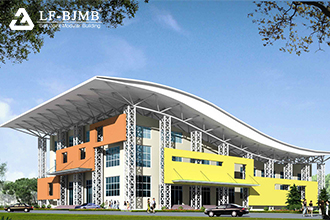
truss roof
A truss is a structure made up of many interconnected metal members, and welding is one of the common methods of joining these members together. The following are the general steps involved in truss welding:
Design and Preparation: Before welding can be performed, the truss first needs to be designed to determine the shape, size and connection of each member. Then, prepare all the members to be welded, making sure their surfaces are clean and free of grease or other contaminants.
Selection of Welding Methods: Trusses can be welded using different welding methods, such as arc welding, shielded gas welding (MIG/TIG welding), resistance welding, etc. The selection of the appropriate welding method depends on the type of material. Selection of the appropriate welding method depends on the type of material, the design requirements of the joist, and the equipment available.
Setting up the welding equipment: According to the selected welding method, set up the welding equipment, including electric welding machine, gas supply, electrodes or wires. Ensure that the equipment is properly adjusted to obtain a stable welding arc or melting pool.
Weld members: Position members to be joined in appropriate locations, ensuring that they are aligned and spaced in accordance with design requirements. The welding equipment then creates a weld at the point where the members are joined.
Monitor weld quality: During the welding process, continuously monitor the quality of the welds. Ensure that the welds are uniform and complete, with no cracks or porosity. Make corrections as necessary to ensure the strength and stability of the structure.
Perform inspections and tests: After completing the welding, perform necessary inspections and tests, such as X-ray inspections, ultrasonic inspections, etc., to ensure that the quality of the weld meets the design and specification requirements.
Anti-corrosion treatment (optional): Depending on the environment where the joist is to be used, it may be necessary to carry out anti-corrosion treatment on the welded parts in order to improve the durability of the structure.
Overall, welding of trusses is a precise process that requires operators to have certain welding experience and skills to ensure that the final structure has the required strength and stability.











 About Us
About Us 2023-12-11
2023-12-11


